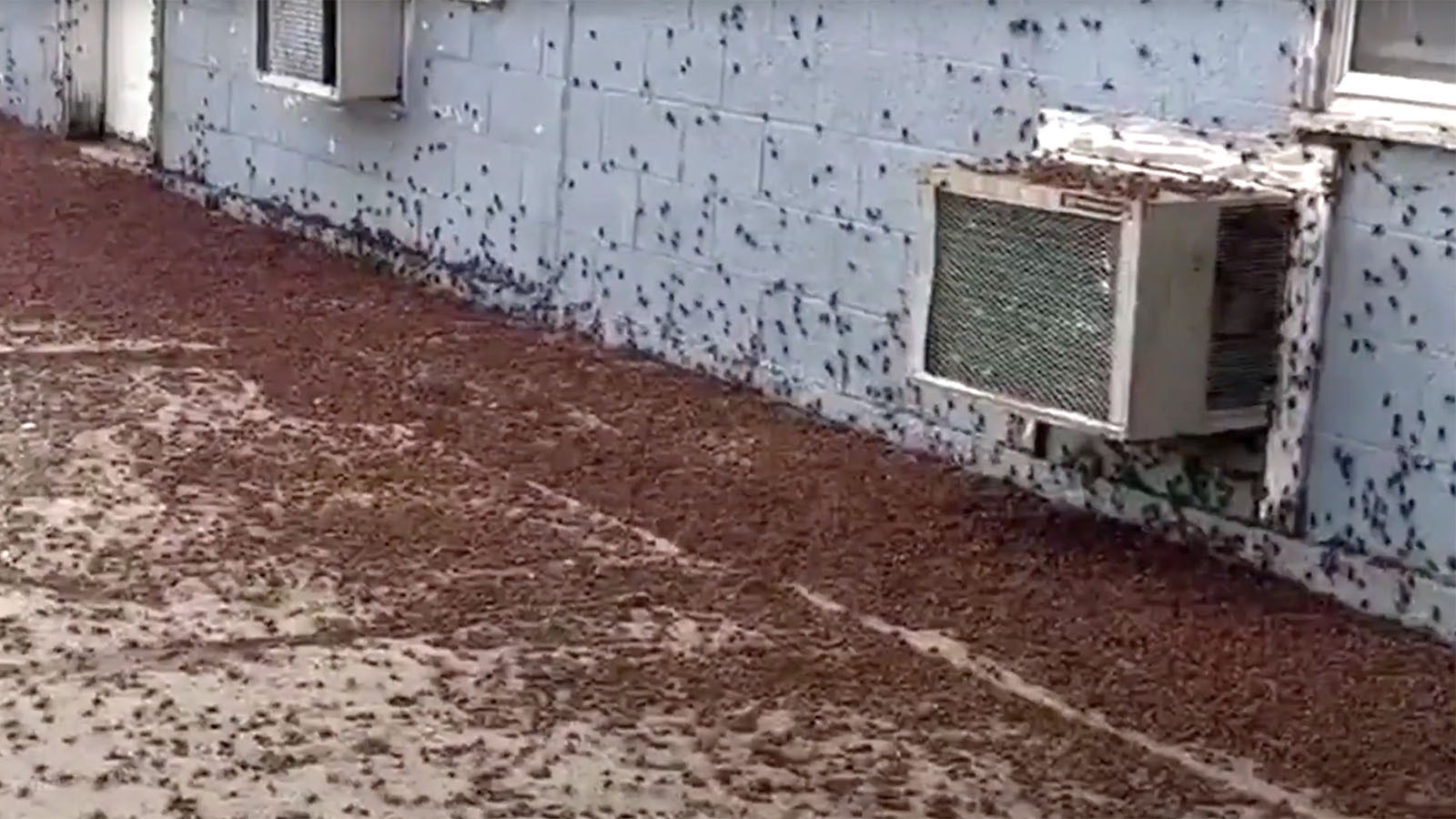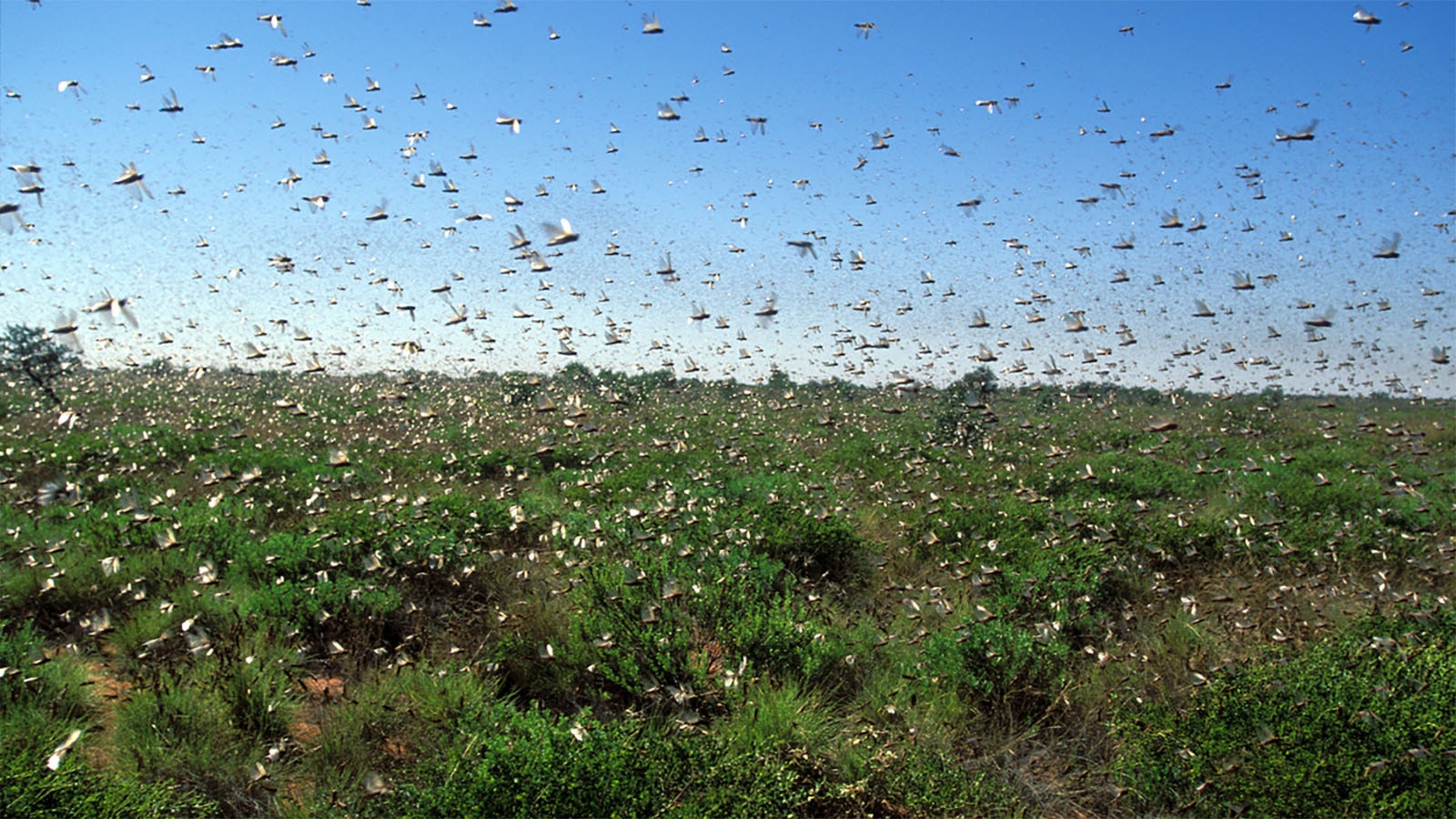Much of the United States is expected to be smothered in cicadas starting in late April and continuing until June, a rare time when two broods of the flying, swarming insects sync up to come to the same party.
The two broods of periodic cicadas, one emerging every 13 years and the other every 17 years, will emerge the same year at roughly the same time, an incredible biological event only happens once every 221 years.
Wyoming will miss out on the event as they synchronized hatchings will plague the Eastern United States, but that doesn’t mean the Cowboy State won’t be bugged by hoards of bugs. Cicadas are expected to hatch here this year, just a little later.
Then there’s the potential for overwhelming swarms of crickets that take over parts of Wyoming periodically.
Cicadian Rhythms
Dr. Gene Kritsky is an entomologist at Mount St. Joseph University in Cincinnati, Ohio.
He’s celebrating his 50th year as one of the foremost experts on cicadas, and to say he’s been brooding on this unique confluence of cicadas for his entire professional life is an understatement.
“The last time this happened, Thomas Jefferson was president,” he said. “Lewis and Clark were exploring the West.”
In addition to his many books on cicadas, like “A Tale of Two Broods,” Kritsky has studied every cicada brood emergence in the last half-century. He’s even created an app, Cicada Safari, that allows curious people and scientists to monitor cicada broods and share their images and videos of the amazing insects.
Kritsky explained that different cicadas occupy different regions of the country. Brood XIX, the 13-year brood, is clustered in the Midwest, primarily Illinois, Iowa and Wisconsin. Brood XIII, the 17-year brood, stretches throughout most of the Southeast, from Virginia through Georgia and Arkansas to Missouri and Illinois.
Both cicada broods enjoy life underground in Illinois, the Land of Lincoln.
The soon-to-emerge cicada larvae have lived underground for over a decade, tapping into tree roots for food. During their brief time above ground, they’ll mate, lay their eggs and drop dead in just a few weeks.
And they’ll make a lot of noise during their fast and furious lives. Their 100-decibel mating songs are comparable to the volume of a jackhammer or motorcycle.
Kritsky said there’s a small region of central Illinois where the territories of the two broods overlap. Naturally, he intends to be at the nexus of the cicada chicanery.
The deafening madness begins in late April when Brood XIX starts to emerge in the Southeast.
“People always ask me, ‘What good are cicadas?’ They got me tenure,” he said.

Wyoming’s Annual Invitation
The 221-year confluence of Broods XIII and XIX is exciting for experts like Kritsky, but Wyoming’s cicadas didn’t get the invitation to the party.
Wyoming has plenty of cicadas that emerge to soak up the summer sun, but Cowboy State cicada broods are annual rather than periodic.
“Annual cicadas come out in smaller numbers,” he said. “They're a little bit bigger, have different coloration, their songs are very different and they prefer different plants to lay their eggs.”
Broods XIII and XIX wait their requisite periods of years to emerge. Wyoming cicadas come out every year, but Kritsky said they have their own deceptive longevity.
“The eggs those cicadas emerge from were laid six or seven years ago,” he said. “The cicadas that emerge every summer in Wyoming are actually several years old.
Also, Kritsky said periodic and annual cicadas don’t share the same calendar. Even if Wyoming’s annual cicadas wanted to join the 221-year cicada party, they wouldn’t get there in time.
“The periodical cicadas will be dead and mostly gone by the time the annuals start to come out,” he said.
Plagues Of Not Locusts
According to Kritsky, the first cicada brood recorded in American history was in Massachusetts in 1634. They were initially believed to be locusts, like the ones referenced multiple times in the Bible.
“Basically, (they) used the King James Version Bible,” he said. “The indigenous populations of New England ate cicadas. John the Baptist ate locusts. The plagues of Exodus, large numbers. Cicadas, large numbers. So, they must be locusts.”
Further scientific analysis determined that cicadas are very different from locusts. While locusts are closely related to crickets and grasshoppers, cicadas are more closely related to the tiny aphids one might see in their gardens.
Kritsky doesn’t begrudge anyone who might confuse a cicada for a locust. That’s why he understands how Wyomingites might associate cicadas with another insect that emerges in large numbers during the summer: Jerusalem crickets.
The large, flightless Jerusalem crickets that occasionally appear in baffling large numbers throughout Wyoming are superficially like cicadas. However, Kritsky said numbers are where the similarities end.
“Mormon crickets do come up with big numbers,” he said of the swarms of those insects that appear all over the state. “They come up regularly but not on a pattern. The only thing they have in common (with cicadas) is that they are insects. But I want to say that in Wyoming, it’s understandable that there would be that mix-up.”
Jerusalem crickets are in the same order of insects as locusts. And Kritsky knows they can cause their own plague.
“And as they start moving across roads, they'll make the road slippery,” he said. “There have been accidents, cars going off the roads because they’re so slippery with crickets.”
That’s what happened in areas around Wyoming last spring. In the tiny town of Edgerton, the swarms were so thick the roads looked like they were moving. And people here have been dealing with them since the area was settled.

Ecological Pulses
The idea of millions upon millions of loud, freaky-looking insects emerging from the ground and smothering the Eastern United States for several weeks can be a little unsettling. But for plants, animals and humans that aren’t so squeamish, periodic cicadas are a beautiful sign of a healthy environment.
Kritsky said cicadas provide “ecological pulses” that convey the health of their environments. The deciduous forests of the Midwest and Southeast benefit enormously from the regular emergence of the cicadas.
“For example, when they emerge from the soil, they come out of holes about the diameter of your pinky,” he said. “There's enough clay in the soil that the nymph moving up and down in that tunnel made it smooth. Later in the summer, the hot summer sun bakes our soil and makes it hard. And if you have heavy rain, some of it goes down those holes. It's like a natural aeration for the tree.”
The cicada broods provide a veritable feast for local animals. Dogs, cats, raccoons, squirrels, chipmunks, deer, owls, snakes and turtles gorge at the all-you-can-eat cicadas buffet.
Kritsky referenced studies by the Indiana and Ohio divisions of wildlife that examined the relationship between cicadas and turkeys. They found that the body weight of male turkeys in areas with cicada emergence was greater than that of those that didn’t.
Even when the cicadas die, their rotting carapaces smother the soil with vital nutrients. Although Kritsky admits that the stink of rotting cicadas, especially after heavy rain, is “a scent memory you'll never forget.”
Cicada Emergency Zone
Wyoming’s annual cicadas also provide tasty morsels and have plenty of ecological benefits. But as would befit any true Wyomingite, their emergence and lifecycle aren’t as loudly dramatic as the incredible spectacle the periodic cicada broods will soon perform in the Eastern U.S.
Even so, Kritsky hopes Wyomingites will get excited about the 221-year confluence of Broods XIII and XIX. Even if they won’t witness it firsthand, he hopes they’ll spread the word to anyone who might share their cicada experience so scientists like him can make the most of the historic event.
“Some people (in Wyoming) have relatives living in the ‘cicada emergency zone,’” he said. “My Cicada Safari app now has over 200,000 downloads, and in three years, I’ve received over half a million photographs or verification. We’re hoping this year, with the app and getting the word out, that everyone will help us. We want to get this data and be able to monitor this.”
Contact Andrew Rossi at andrew@cowboystatedaily.com
Andrew Rossi can be reached at arossi@cowboystatedaily.com.





